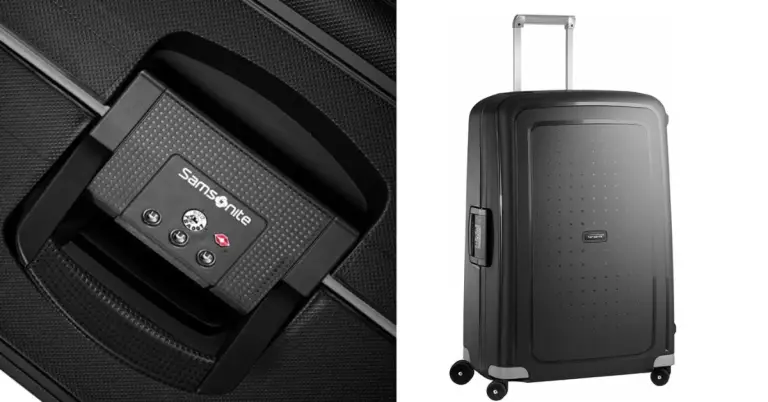Baggage Allowance for International Flights Experience
In international travel, the idea of baggage allowance is an essential factor that not only influences a traveler’s planning but also contributes to the overall convenience and cartable of baggage allowance on international journeys. As individuals embark on cross-border adventures, airlines have recognized specific guidelines for governing the weight, quantity, and dimensions of luggage that can carry the passengers. In this article, you will get knowledge of baggage allowance for international flights, shedding light on its import, several variations across the airlines, and practical tips for travelers to confidently navigate this vital aspect of their journey.
What is baggage allowance, and why is it important?

Please know that baggage allowance refers to the specific limits set by airlines and what amount, weight, and dimensions of luggage will be carried by the passengers. It also encompasses checked baggage, stored in the aircraft’s cargo hold, and carry-on baggage, which passengers take into the cabin. The importance of baggage allowance stems from several key factors:
Aviation Safety and Weight Distribution:
Airlines always carefully manage an aircraft’s weight and balance to ensure safe takeoff, flight, and landing. Excess baggage and luggage always disrupt the balance and potentially compromise the flight’s safety. By maintaining baggage limits, airlines can help maintain optimal weight distribution and stability when the aircraft is flying.
Operational Efficiency:
The baggage allowance regulations should have efficient ground operations because overloaded aircraft need more time and resources for loading and unloading, which causes flight delays and disruptions.
Fare Consistency:
Baggage allowance helps maintain fare consistency across different ticket and seat categories. High-fare class passengers receive more generous baggage allowances as part of their ticket benefits, and the lower class gets fewer benefits.
Revenue Generation:
The airline charges additional fees for excess baggage against over baggage as their limitation and it allows them to offer competitive fares to passengers.
Passenger Convenience:
International flight-checked baggage size policies provide passengers with guidelines for packing and planning their trips. Knowing the limits helps travelers avoid hassles at the airport, potential fees, and the inconvenience of repacking or removing items.
Regulatory Compliance:
Airport baggage regulations and guidelines are related to baggage and cargo loading, and enforcing baggage allowance ensures compliance with these rules and promotes safe and secure travel.
Environmental Considerations:
Overloaded aircraft can consume more fuel, leading to increased carbon emissions. Baggage allowance for international flights contributes to airlines’ efforts to manage their environmental impact by optimizing fuel consumption.
Baggage rules for flying for travelers understand these allowances to ensure a smooth and hassle-free journey while contributing to the overall efficiency and safety of the aviation industry.
Airport rules and regulations for baggage
The airport has several rules and regulations for baggage covering a range of guidelines and requirements that passengers must adhere to when packing and transporting their luggage. These rules ensure safety, security, and efficient airport operations.
Baggage Allowance rules:
As discussed earlier, airlines have specific limits for size, weight, and number of bags passengers can bring as checked and carry-on baggage. Knowing your airline’s baggage allowance is important to avoid excess baggage fees or denied boarding.
Prohibited Items:
For Safety and security reasons, the airline is strictly prohibited from being carried in checked and carry-on baggage. They avoid flammable materials, explosives, firearms, and certain liquids over a certain volume. So when you go traveling with luggage, you need to check your airline or the airport’s website for a list of prohibited items.
Liquid Restrictions:
May airports follow the “3-1-1” rule for liquids in carry-on baggage, and each container of fluid is not (3.4 ounces) 100 milliliters, and all luggage must be placed in single quart-sized, clear, resealable plastic bags.
Carryon Baggage:
The airport has carry-on baggage restrictions, and carry-on bags’ dimensions are usually smaller than those for checked baggage. Typically, carry-on luggage is around 22 in x 14 in x 9 in inches (56 x 36 x 23 cm). Weight limits for carry-on bags are generally lower, ranging from 7 kg (15 lbs) to 10 kg (22 lbs).
Security Screening:
All luggage and baggage, checked and carried on, undergo security screening at airports. Passengers must remove laptops, tablets, and other large electronic devices from their bags for separate screening and need shoes, jackets, and belts removed while scanning.
Proper Labeling:
Proper labeling is another essential part, and airlines check baggage has clear identification tags with your name, contact information, and flight details. It is ensured that your luggage is correctly routed and returned to you in case of mishandling or loss.
Oversized or Special Items:
Suppose you travel with oversized or special items such as musical instruments or sports equipment. In that case, it’s important to notify your airline in advance and follow their rules for packing and handling.
Valuables and Electronics:
It would help if you kept your valuables items like electronics and important documents should be kept on your carry-on baggage. It allows you to remove these items for separate screening during security checks.
In addition, it is important to research and acquaint yourself with the specific rules and regulations of the airport you are departing from and those of your destination country.
The importance of check-in baggage guidelines before you travel
The importance of check-in baggage guidelines is to understand and keep in mind to check-in baggage guidelines before you travel and hassle-free journey. Here’s why:
Avoid providing extra fees; you need to familiarize yourself with your airline’s baggage policies. It will help you pack within weight and size limits, preventing costly excess baggage fees that can significantly increase your travel expenses.
Conclusion
In conclusion, comprehending and abiding by baggage allowance for international flights is integral to international travel preparation. These regulations dictate the parameters within which we pack our belongings and play a vital role in ensuring the safety, efficiency, and convenience of air travel. By airport baggage restrictions understanding the types of baggage allowances, weight limits, size restrictions, and prohibited items, travelers can make informed decisions when packing and minimize the risk of encountering unexpected fees, delays, or inconveniences at the airport.
Recent Posts You May Like:
- How to Open a Locked Suitcase Without a Key

- What to Do If You Forgot Your Samsonite Code: Unlock Travel Woes

- How to Set Delsey Luggage Lock: The Ultimate Guide

- How to Pack Sunscreen in Checked Luggage: Expert Tips

- Why Do Schools Require Clear Backpacks: Unveiling the Necessity

- How to Measure Linear Inches of Luggage: Quick & Easy Guide

- How to Tie a Luggage Tag | The Ultimate Guide

- How to Loosen Backpack Straps: A Practical Guideline

- General Tips: How Many Books Can You Put in an Empty Backpack?

- How to Thread a Backpack Strap Correctly Tips and Tricks

- How to Wash a North Face Backpack in the Washer

- Baggage Allowance for International Flights Experience









